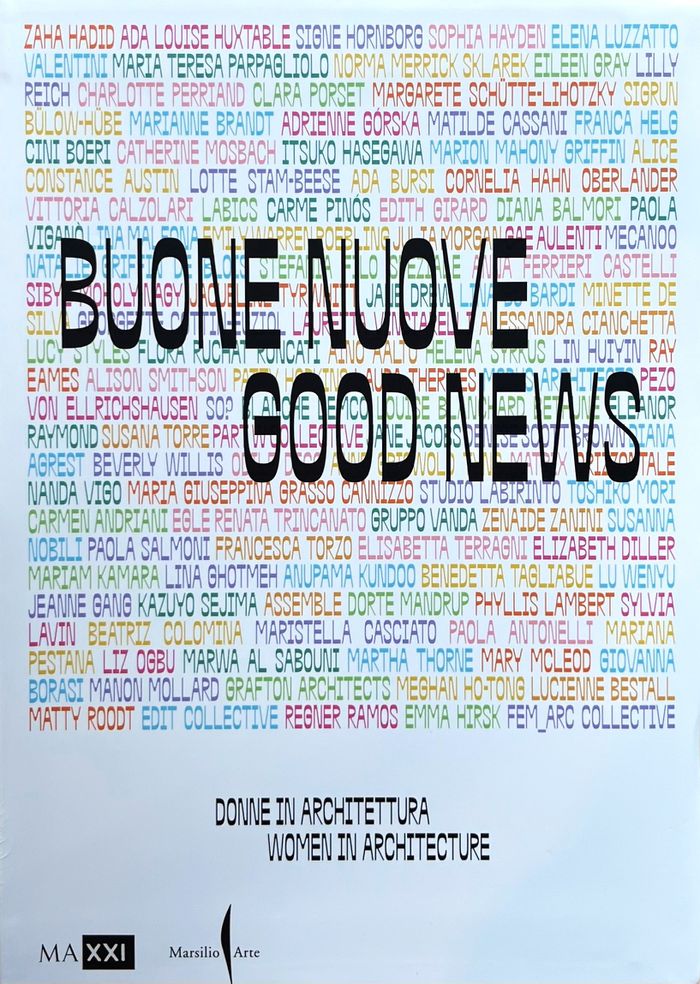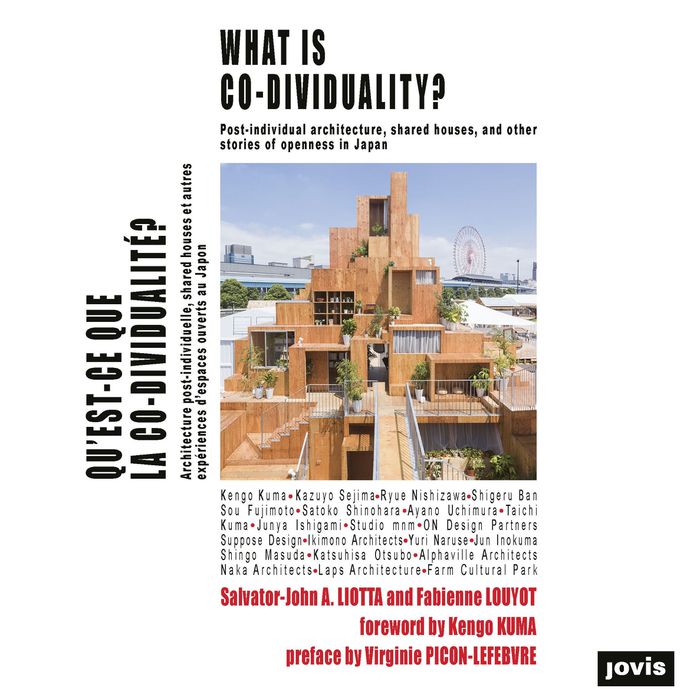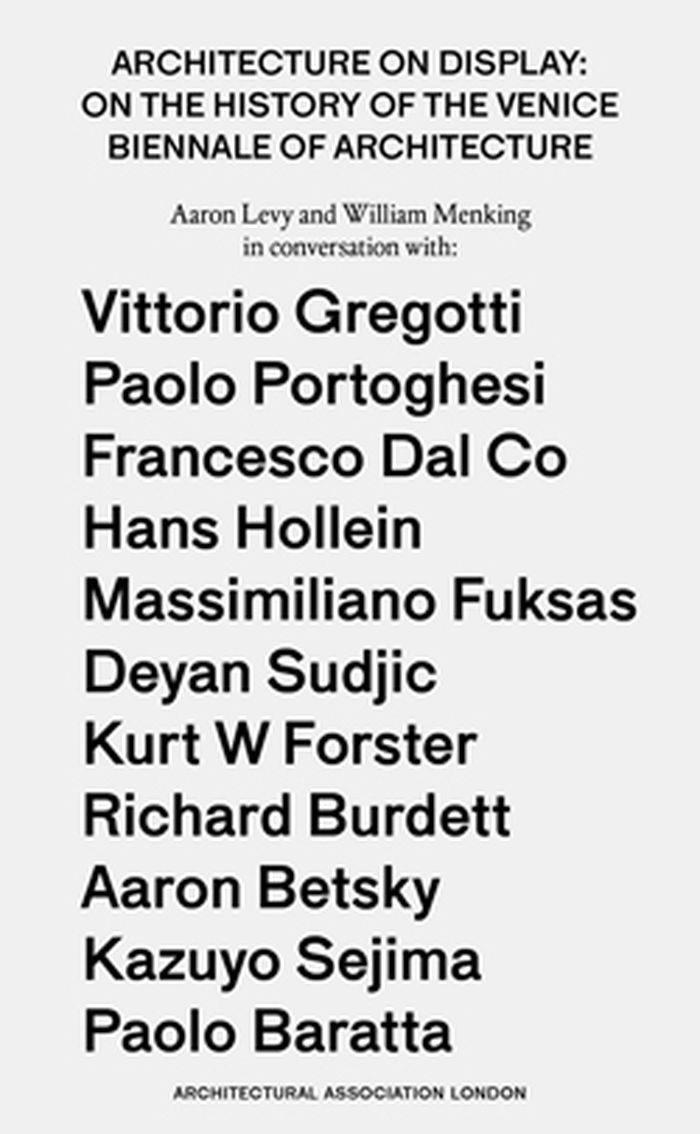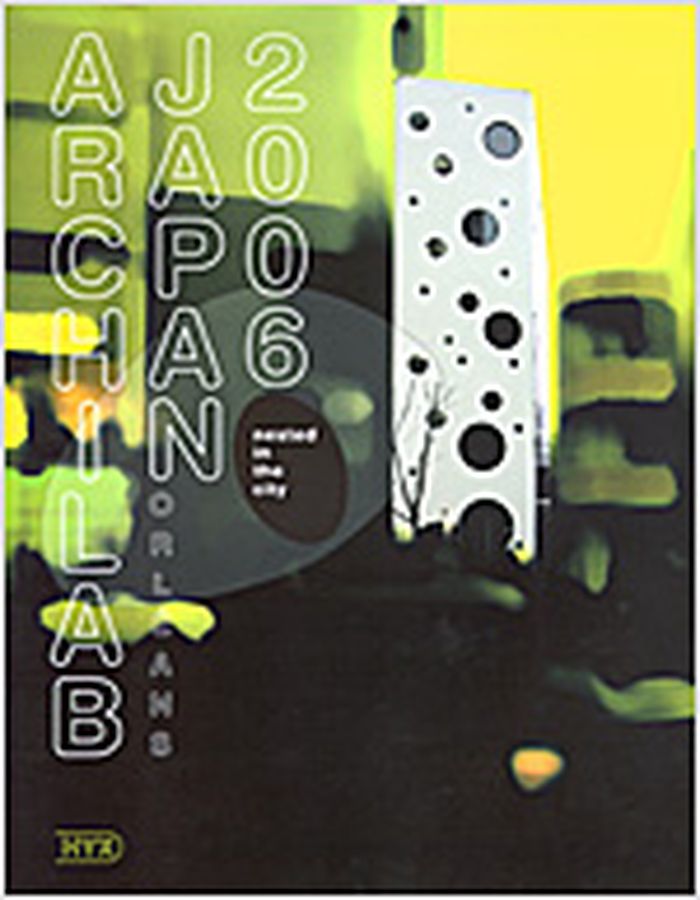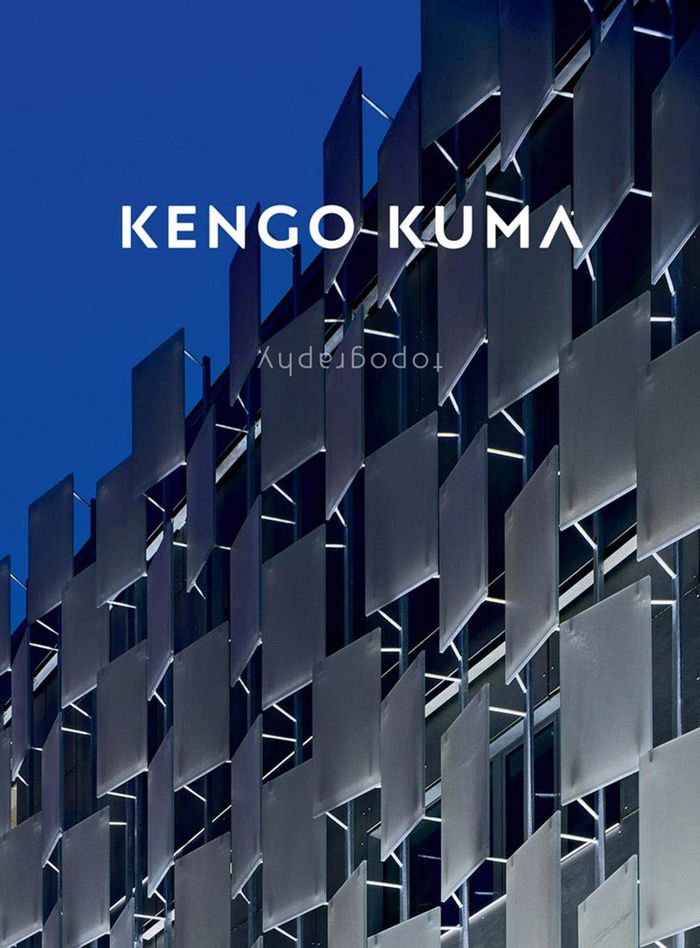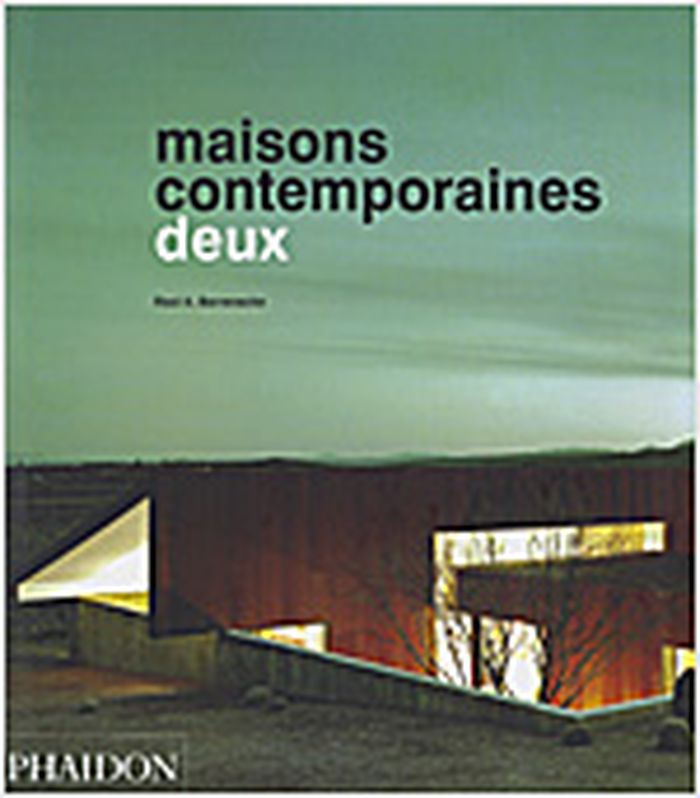$42.00
(available in store)
Summary:
In the space of a few decades, the perception and culture of what an architect can be has evolved from the stereotype of “one man at the helm” to a far more complex and diversified range of possibilities: couples, collectives and teams of all kinds. But it is the ever-growing and ever-more influential presence of women that characterizes the discipline in our time. In(...)
Contemporary Architecture
March 2023
Good news: Women in architecture
Actions:
Price:
$42.00
(available in store)
Summary:
In the space of a few decades, the perception and culture of what an architect can be has evolved from the stereotype of “one man at the helm” to a far more complex and diversified range of possibilities: couples, collectives and teams of all kinds. But it is the ever-growing and ever-more influential presence of women that characterizes the discipline in our time. In the exemplary cases and stories presented and illustrated in this volume, reflecting not only the quality of the architecture but also the great variety of contexts and professional configurations, we find the most important names of the recent past (Zaha Hadid, Cini Boeri, Lina Bo Bardi) and the present (Elizabeth Diller, Kazuyo Sejima, Grafton Architects): women at the head of large firms, who may work alone or who collaborate with other women or a partner, or who are members of collectives.
Contemporary Architecture
books
$70.00
(available to order)
Summary:
The islands of Naoshima, Teshima, and Inujima in Japan's Seto Inland Sea are places of pilgrimage for friends of contemporary art and architecture. Alongside works in public spaces as well as site-specific installations, the islands are also full of numerous museums and collections of contemporary art. This publication offers a comprehensive documentation of this(...)
Insular insight : where art and architecture conspire with nature
Actions:
Price:
$70.00
(available to order)
Summary:
The islands of Naoshima, Teshima, and Inujima in Japan's Seto Inland Sea are places of pilgrimage for friends of contemporary art and architecture. Alongside works in public spaces as well as site-specific installations, the islands are also full of numerous museums and collections of contemporary art. This publication offers a comprehensive documentation of this unique cultural landscape surrounded by Japan's Inland Sea. The photographs by the Dutch photographer Iwan Baan, ranging from tiny details to giant panoramas, create a comprehensive portrait of the islands with their fluid transitions between nature, art, and architecture. Numerous texts introduce readers to the individual areas and projects that are either permanently on display on the islands or have taken place there temporarily. In addition, other essays deal with the island as a cultural concept and phenomenon. Among others, the book presents buildings by Kazuyo Sejima, Ruye Nishizawa, Tadao Ando, and Hiroshi Sambuichi.
books
July 2011
Contemporary Asian Architecture
$32.00
(available to order)
Summary:
Take Rem Koolhaas’s lauded new Seattle Public Library, and remove it from its context. Would it be as beautiful? Would it lose something of its meaning (not to mention the books off the shelves), if you picked it up and placed it elsewhere? Is it even possible for a building to have no relation whatsoever to the place where it is erected? Is it pointless to talk about(...)
Open house : towards a new architecture
Actions:
Price:
$32.00
(available to order)
Summary:
Take Rem Koolhaas’s lauded new Seattle Public Library, and remove it from its context. Would it be as beautiful? Would it lose something of its meaning (not to mention the books off the shelves), if you picked it up and placed it elsewhere? Is it even possible for a building to have no relation whatsoever to the place where it is erected? Is it pointless to talk about architecture as a pure intellectual enterprise, without grounding it in its surroundings? These are among the important questions raised by the German architecture scholar Florentine Sack in this exploration of the philosophical, aesthetic, and subjective links between a building and its environment. Drawing upon traditions as old as that of the Japanese house through models of classical Western modernism, she brings the notion of unity to bear on contemporary architecture, referring to exemplary buildings by Koolhaas, Herzog & de Meuron, Peter Zumthor, Kazuyo Sejima, Ryue Nishizawa, and many others.
Residential Architecture
$108.00
(available to order)
Summary:
Japan is becoming a popular travel destination for more and more architects today. With its wide variety of architecture, it is both a source of fascination and inspiration. Over a number of years, the review Detail has been consistently documenting the construction activities which have taken place in Japan, and this book draws on the best of their experience and(...)
Contemporary Asian Architecture
October 2002, München
In detail : Japan - architecture, constructions, ambiances
Actions:
Price:
$108.00
(available to order)
Summary:
Japan is becoming a popular travel destination for more and more architects today. With its wide variety of architecture, it is both a source of fascination and inspiration. Over a number of years, the review Detail has been consistently documenting the construction activities which have taken place in Japan, and this book draws on the best of their experience and connections to present and analyse with plans and details the most interesting buildings from various architectural trends in contemporary Japan, including Ando's Museum for Contemporary Art in Naoshima, Toyo Ito's Mediathek, a residential building by Kazuyo Sejima, and a temple gallery in Kyoto by Takashi Yamaguchi. Introductory essays discuss the developments in Japanese architecture, and together with portraits of not only well-known Japanese architects and offices, but also young offices such as Atelier Bow Wow, this volume provides a stimulating discussion of current Japanese building in the context of traditional architecture.
Contemporary Asian Architecture
What is co-dividuality?: post-individual architecture, shared houses and other stories of openness
$48.95
(available to order)
Summary:
This book explores the concept of co-dividuality, an architecture that expresses a new response to joint living in the age of postindividualism, social media, and the sharing economy. The focus lies on current experimentation in Japanese architecture and presents thematic homes with shared spaces designed as a result of warm, simple, fun and contemporary design(...)
June 2020
What is co-dividuality?: post-individual architecture, shared houses and other stories of openness
Actions:
Price:
$48.95
(available to order)
Summary:
This book explores the concept of co-dividuality, an architecture that expresses a new response to joint living in the age of postindividualism, social media, and the sharing economy. The focus lies on current experimentation in Japanese architecture and presents thematic homes with shared spaces designed as a result of warm, simple, fun and contemporary design reflections. In addition to their private room, the co-tenants have large common areas where they can practice urban farming, create a start-up, cook together, or experience new spatial ergonomics. The book offers an overview not only on domestic space but also on projects characterized by a multifarious mix between public and private spheres. 'What Is Co-dividuality?' reflects on how we might want to live tomorrow. The book includes projects by Kengo Kuma, Kazuyo Sejima, Ryue Nishizawa, Shigeru Ban, Sou Fujimoto, Satoko Shinohara, Ayano Uchimura, Taichi Kuma, Junya Ishigami, Suppose Design, Naruse Inokuma, and Masuda + Otsubo, among others.
$19.95
(available to order)
Summary:
Architecture on Display is a research initiative that consists of interviews with each of the living directors of the Venice Biennale for Architecture. The origins of the architecture biennale are generally traced to the 1970s, when it emerged from under the umbrella of the larger Venice Biennale, which was itself established in 1895. Since then it has become one of the(...)
Architecture on display: On the history of the Venice Biennale of Architecture
Actions:
Price:
$19.95
(available to order)
Summary:
Architecture on Display is a research initiative that consists of interviews with each of the living directors of the Venice Biennale for Architecture. The origins of the architecture biennale are generally traced to the 1970s, when it emerged from under the umbrella of the larger Venice Biennale, which was itself established in 1895. Since then it has become one of the most prestigious forums for architectural discourse today, and has served as a model for a range of international exhibitions. The book explores the biennale through the directors who established its particular discourse, including Vittorio Gregotti, Paolo Portoghesi, Francesco Dal Co, Kurt W Forster, Massimiliano Fuksas, Hans Hollein, Richard Burdett, Deyan Sudjic, Aaron Betsky and Kazuyo Sejima, as well as the current president of the Venice Biennale, Paolo Barrata. These conversations do not seek to recapitulate the exhibitions themselves but rather explore the questions that these exhibitions raise, with the hope of offering a model for future curatorial endeavours.
Museology
$94.00
(available to order)
Summary:
On the occasion of the exhibition "Archilab 2006" dedicated to the Japenese architecture and entitled "Nested in the city", Hyx publish the catalog of the exhibition in french and english version. They present all the projects of thirty invited architects and a set of critical texts which put in perspective the stakes and the subjects of the exhibition. More than any(...)
October 2006, Orléans
Archilab Japan, Orléans 2006 : nested in the city
Actions:
Price:
$94.00
(available to order)
Summary:
On the occasion of the exhibition "Archilab 2006" dedicated to the Japenese architecture and entitled "Nested in the city", Hyx publish the catalog of the exhibition in french and english version. They present all the projects of thirty invited architects and a set of critical texts which put in perspective the stakes and the subjects of the exhibition. More than any other country, Japan was interested at home, the space domesticates being perceived as a space privileging the thought. Hundred of projects presented in the catalog are built for the greater part. Selected by both curators (Akira Suzuki and Mariko Terada), they offer us a panorama of this architects' new generation which began in the 1990s. The most famous in France are doubtless Shigeru Ban presented to Archilab in 1999 and which was the first one to make approve tubes cardboard as support of his houses and also Kasujo Sejima who saw confiding with Ryue Nishizawa the construction of the Museum of the Louvre to Lens. Symbolic Bow Wow workshop is the Leader of this new generation. After the economic crisis of the end of the 90s, the construction of public establishments of average dimension and the competitions of architecture rarefied. The house thus becomes the space of creation privileged for these architects. That's why, in Tokyo, Jun Aoki, Kazuyo Sejima, Ryue Nishizawa, Takaharu and Yui Tezuka, Mitsuhiko Sato, Taira Nishizawa, Masao Koizumi, Yasuhiro Yamashita, Mikio Tai, Yuki Ishiguro, conceive small houses which embody the way of life of their inhabitants and maybe our future today.
Kengo Kuma: Topography
$100.00
(available in store)
Summary:
Kengo Kuma is a globally acclaimed Japanese architect whose prodigious output possesses an inherent respect and value of materials and environment, often creating a harmonious balance between building and landscape. He masterfully engages both architectural experimentation and traditional Japanese design with twenty-first-century technology, resulting in highly advanced(...)
Kengo Kuma: Topography
Actions:
Price:
$100.00
(available in store)
Summary:
Kengo Kuma is a globally acclaimed Japanese architect whose prodigious output possesses an inherent respect and value of materials and environment, often creating a harmonious balance between building and landscape. He masterfully engages both architectural experimentation and traditional Japanese design with twenty-first-century technology, resulting in highly advanced yet beautifully simple, gentle, human-scaled buildings. Often ranked among other esteemed architects, such as Shigeru Ban, Tadao Ando, Kazuyo Sejima, or Kenzo Tange, Kuma is always in search of new materials to replace concrete and steel, and seeks a new approach for architecture in a post-industrial society, fusing interior and exterior realms to make spaces that create a calming and tranquil atmosphere. Known for his prolific writing, Kuma is constantly re-engaging with different aspects of the architectural discipline, whether it be construction or representation in order to give further progress to his ideas. This volume showcases close to forty high-profile works by Kengo Kuma & Associates (based in Tokyo and Paris), focusing on some of his most recognised works, including the Asakusa Culture and Tourism Center in Tokyo, the Mont Blanc Base Camp project, the Great Bamboo Wall, as well as progress for the design for Tokyo's main stadium for the 2020 Olympic Games.
Architecture Monographs
Maisons contemporaines deux
$89.95
(available to order)
Summary:
L'univers domestique contemporain suscite depuis quelques années un intérêt grandissant. Des expositions, des magazines et des émissions télévisées rendent compte des dernières innovations en matière d'architecture résidentielle. «Maisons contemporaines 2» dresse un panorama des maisons récentes les plus novatrices construites à travers le monde. Les trente-trois maisons(...)
Residential Architecture
December 2005, London, New York
Maisons contemporaines deux
Actions:
Price:
$89.95
(available to order)
Summary:
L'univers domestique contemporain suscite depuis quelques années un intérêt grandissant. Des expositions, des magazines et des émissions télévisées rendent compte des dernières innovations en matière d'architecture résidentielle. «Maisons contemporaines 2» dresse un panorama des maisons récentes les plus novatrices construites à travers le monde. Les trente-trois maisons présentées ici ont été réalisées dans quinze pays différents, par des architectes consacrés ou prometteurs parmi lesquels David Adjaye (Londres), Tadao Ando (Japon), Carlos Ferrater (Espagne), Sean Godsell (Australie), Kengo Kuma (Chine), Richard Meler (Etats-Unis), Julie Snow (Canada) ou Werner Sobek (Allemagne). Les maisons sont réparties en trois chapitres thématiques: le premier examine la relation entre architecture et paysage ; le second regroupe des projets répondant à des demandes de clients inhabituelles; le troisième présente des résidences où sont mis en œuvre de nouveaux matériaux et des techniques d'économie d'énergie. Chaque maison est l'illustration d'un regard original sur les modes de vie et l'esthétique actuels : la " petite maison " (Kazuyo Sejima/SAANA, Tokyo) permet ainsi de loger une famille de trois personnes sur une parcelle réduite de 60 m² ; la maison Carter Tucker (Sean Godsell, Australie) et la maison Nenning (Cukrowicz.Nachbaur, Autriche) sont des interprétations modernes de la construction en bois traditionnelle ; la maison Koehler (Julie Snow, Canada) et la maison Weiss (Steven Harris, Mexique) offrent toutes deux un havre de repos dans des sites à la beauté sauvage.
Residential Architecture
